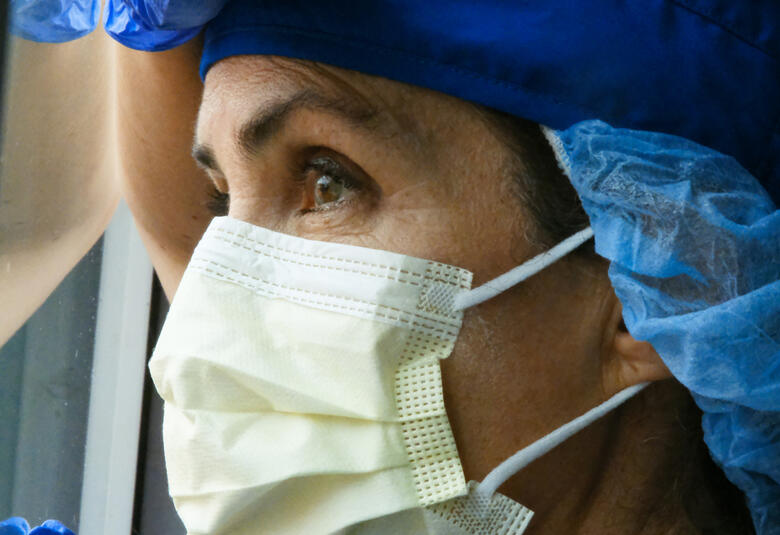Widespread successful use of deep brain stimulation (DBS) to treat neurological conditions, such as Parkinson’s disease, has fueled enthusiasm to extend to treating psychiatric disorders, too. Treatment-resistant schizophrenia is an obvious candidate, but there are significant questions. What is an appropriate anatomical target? Can informed consent be obtained? Will patients cooperate with long-term follow-up? These issues were debated, and results were presented from the first DBS clinical trial in schizophrenia, at an ECNP Virtual 2020 session.
DBS is increasingly being used in psychiatric disorders, including obsessive-compulsive disorder and major depressive disorder. Schizophrenia remains a devastating disorder and approximately 30% of patients are resistant to anti-psychotic drugs1. Novel therapeutic interventions are needed.
DBS is increasingly being used in psychiatric disorders
How does DBS work?
Brain electrodes are implanted using stereotactic surgery, and connected to a pulse generator under the skin. The DBS device is programmed to deliver high frequency electrical stimulation, producing functional inhibition in a spherical region around the electrode. Local and distant excitatory effects may also play a role.
Ethical considerations
Judith Gault (University of Colorado, USA) discussed the ethical considerations2, including capacity for informed consent, beneficence (mortality rate 0.6%, but response rate unknown), and justice. Damiaan Denys (University of Amsterdam, The Netherlands) suggested the core ethical problems are dehumanization (are you still human with implanted brain devices?), depersonalization (does DBS change a person?), and devoluntarization (do you have free will?).
How to decide
Outstanding issues include absence of a single underlying brain abnormality and need for highly motivated patients
Prof Denys discussed conditions to fulfill when considering DBS treatment, including, identifiable anatomical dysfunction, severe and refractory condition, and potential for improvement. He concluded that treatment-resistant cases of schizophrenia would justify use of DBS, but outstanding issues include absence of a single underlying brain abnormality and need for highly motivated patients.
What are possible targets?
Focus on local inhibitory effects of DBS by targeting regions with excessive dopamine
Peter McKenna (FIDMAG, Barcelona, Spain) discussed choice of suitable electrode sites, using a theoretical (evidence for localized abnormality) or pragmatic (use of DBS in other psychiatric conditions) approach. He suggested focusing on local inhibitory effects, by targeting regions with excessive dopamine, such as basal ganglia sites and ventral tegmental area, or deactivation failure in the medial prefrontal cortex3.
Evidence from clinical trials
There are few relevant clinical studies to date. The Toronto trial (NCT01725334) was stopped due to recruitment issues, and the Baltimore trial (NCT02361554) is ongoing. Wang et al. have published a study of 2 patients receiving habenula-targeted DBS4. Both experienced initial symptom improvement, but only maintained in 1 patient at 12-month follow-up, whilst symptoms worsened in the other.
Illuminada Corripio (St Pau Hospital, Barcelona, Spain) presented results from their trial of 8 patients with medication-resistant positive symptoms5. DBS was applied to the nucleus accumbens (n=4) or subgenual anterior cingulate cortex (n=4). Seven patients completed the open stabilization phase, with 1 implanted patient unable to receive DBS due to surgical complications. Four of the remaining 7 patients met the symptomatic improvement criteria and 3 entered the double-blind crossover phase, showing worsening of symptoms when DBS was discontinued. Two patients developed persistent psychiatric side effects (negative symptoms/apathy and mood instability).
The future
DBS may be a promising therapy for patients with treatment-resistant schizophrenia
The speakers agreed that DBS may be a promising therapy for patients with treatment-resistant schizophrenia. Larger trials are needed and further work to improve DBS targeting and phenotype selection.
Our correspondent’s highlights from the symposium are meant as a fair representation of the scientific content presented. The views and opinions expressed on this page do not necessarily reflect those of Lundbeck.




